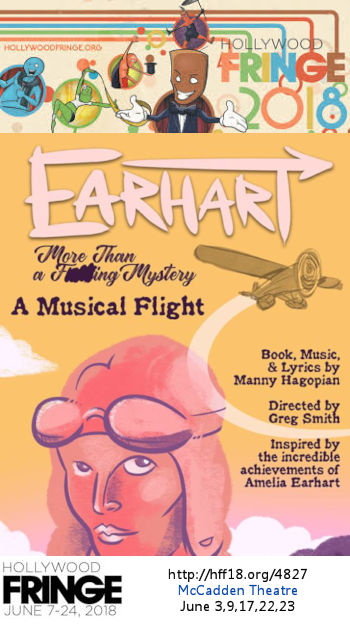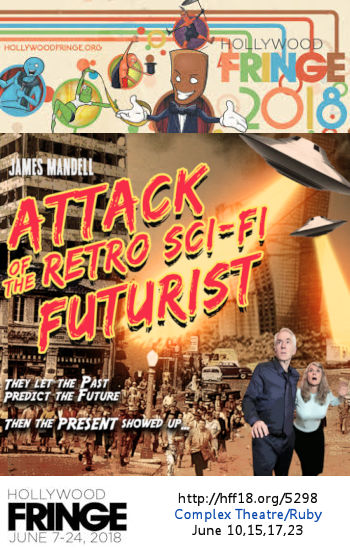 And the Fringing continues: Yesterday we saw four more shows (6 out of a current 20 down). The first was about a rapping ape; the second was about a girl who wished for different parents… and got them.
And the Fringing continues: Yesterday we saw four more shows (6 out of a current 20 down). The first was about a rapping ape; the second was about a girl who wished for different parents… and got them.
 The idea behind Hamilkong (HFF19, WWW, Playbill, FB) was a potentially interesting one: tell the story of King Kong, using the music from the juggernaut that is the musical Hamilton. The execution, at least at our preview performance, was fatally flawed in a number of ways. First and foremost, they committed the cardinal sin of a Fringe show: Thou shalt not run over your time slot. This show was scheduled for our hour; we walked out at almost the ninety minute mark because we had another show to make, and they had three songs still to go. We did receive an email from Adam Korenman (FB), the producer (and author, and lyricist) this morning that said: “We know that the show ran a bit longer than intended, and we want to apologize if you had to leave early to make your next play. When ambition and reality collide, you can end up running over a few minutes. HAMILKONG will be cutting some pieces in order to tighten up to 60 minutes. That means that you, as the Preview Crowd, saw an exclusive DIRECTOR’S CUT! Congratulations!”
The idea behind Hamilkong (HFF19, WWW, Playbill, FB) was a potentially interesting one: tell the story of King Kong, using the music from the juggernaut that is the musical Hamilton. The execution, at least at our preview performance, was fatally flawed in a number of ways. First and foremost, they committed the cardinal sin of a Fringe show: Thou shalt not run over your time slot. This show was scheduled for our hour; we walked out at almost the ninety minute mark because we had another show to make, and they had three songs still to go. We did receive an email from Adam Korenman (FB), the producer (and author, and lyricist) this morning that said: “We know that the show ran a bit longer than intended, and we want to apologize if you had to leave early to make your next play. When ambition and reality collide, you can end up running over a few minutes. HAMILKONG will be cutting some pieces in order to tighten up to 60 minutes. That means that you, as the Preview Crowd, saw an exclusive DIRECTOR’S CUT! Congratulations!”
Making lemonade and all that rot, I guess.
Yes, songs need to be cut. But I believe the problem with this show runs a bit deeper than that. Simply put, it is monotonous. There’s a reason that Lin Manuel had the variety of songs that he did — and in particular, why he had the more pop style songs for the King. Breaking up the style of the songs makes the show aurally interesting — it provides the necessary variety for the ears. In its current incarnation, Hamilkong is too much of the same. Look at the song list. How many times can you hear the lyric: “I’m just like a monkey; I’m flexible and funky”? So not only is cutting required, but improving the mix and the storytelling is needed.
Although I haven’t seen it, I can 100% guarantee that the version of King Kong on Broadway adapted the story and is not the Peter Jackson movie on stage. For this to work, the story details need to be worked down a bit a bit more to the essence, and the characters need to be clearer. The idea is good, the execution needs work.
Under the direction of Adam Korenman (FB), and with choreography by Marlee Delia (FB), the staging was effective for a fringe show: meaning minimal costumes and effects. The performances were, for the most part, strong — although with these lyrics, the cast really needs to make sure that they enunciate clearly so the audience can hear all the worlds.
Notable cast members were Geri Courtney-Austein (FB) as the king himself, Hamilkong; Asia Ring (FB) as Ann Darrow, and Sashaaa (FB) as Carl Denham. These three had lovely voices, and did the best they could with the characters they had (after all, this is a parody, meaning the characters weren’t that fleshed out). In more supporting roles, but also with good voices, were Francesca Reggio (FB) as Carol Preston / T-Rex and Olga Desyatnik (FB) as Jack Driscoll. I’ll note that Reggio was particularly cute as T-Rex.
Rounding out the cast were: Nate Leykam (FB) Bruce Baxter / King Lobster / Eisenhower / Agent; Adam Korenman (FB) Captain Engelhorn / New King; Jeanne Lau (FB) Chief Akko / Ensemble; Genna Weinstein (FB) Queen Squid / Ensemble; Jeremy Klein (FB) Cop / Ensemble; and Kyle Reese Klein (FB) Sailor / Ensemble.
The production was inspired by the play Hamilton by Lin-Manuel Miranda, and the character of King Kong by Edgar Wallace and Merian C. Cooper. Music direction by Francesca Reggio (FB), Olga Desyatnik (FB), and Asia Ring (FB). Piano Accompaniment by Nate Leykam (FB). Graphic Design by Joey Korenman. Nick Foran (FB) was the stage manager and technical director.
Hamilkong (HFF19, WWW, Playbill, FB) has three more performances: June 16 @ 630p, June 21 @ 1030p, and June 29 at 1030p. Hopefully, they will get the show cut down to the advertised Fringe length. Tickets are available through the Fringe Website. The show was an ambitious idea and had good performances, but our preview performance ran way long — a cardinal sin for Fringe.
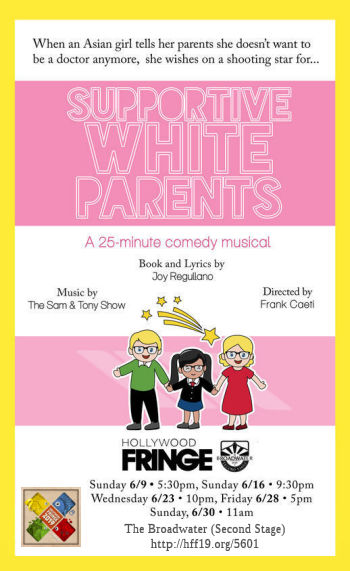 We escaped the machinations of King Kong in order to run over to the Broadwater for what was our best show of the night: Supportive White Parents (HFF19, FB). The premise of this show, which was written by Joy Regullano (FB), with music by The Sam and Tony Show (FB) and Lyrics by Joy Regullano (FB), was simple:
We escaped the machinations of King Kong in order to run over to the Broadwater for what was our best show of the night: Supportive White Parents (HFF19, FB). The premise of this show, which was written by Joy Regullano (FB), with music by The Sam and Tony Show (FB) and Lyrics by Joy Regullano (FB), was simple:
When an Asian girl tells her parents she doesn’t want to be a doctor anymore, she wishes on a shooting star for supportive white parents.
The show, which is structured with a few musical numbers, has Joy telling her Filipino parents that she has decided to change her major from Molecular Biology to Theatre and East Asian Studies, with predictable response. She wishes she had parents that would support her whatever she does, and so wishes on a star for supportive white parents. The stars grant her wish, and suddenly all the things that made up her identity: her drive, years and years of study, etc., have been replaced with the stereotypes of white parents that love you and hug you even if you slack off and talk back. It is a great parody of what parents have become these days. Of course, in the end she decides that her original parents are what she wanted.
The show is extremely funny, with entertaining music and great performances. Perhaps it leaned into the stereotypes a bit, but comedy has the ability to do that and get away with it. It was one of our favorite shows of the night.
In the lead position was Joy Regullano (FB), who not only sang and told the story, but played a mean violin. She was just delightfully fun to watch.
As her Filipino parents were Giselle “G” Tongi (FB) Maria Elena [Joan Almedilla (FB) plays the role on 6/26 and 6/28] and Earl Baylon (FB) Jose, Guitar. Although I’m not an expert on Filipino parents, they seemed to capture what I would expect from that role well.
The Supportive White Parents were played by Gina D’Accario (FB) Carol and Scott Palmason (FB) Jim, with Greg Smith (FB) as the rebelling brother Garrett. They captured the “mayonnaise” perfectly: the parents that love you no matter what you do. Gee, I hope we weren’t like that.
In terms of production credits: The show was directed by Frank Caeti (FB), with music direction by Tony Gonzalez (FB) and Choreography by Ally Vega (FB).
Supportive White Parents has four more performances: Sun 6/16 @ 930p, Wed 6/23 @ 10pm, Fri 6/28 @ 5pm, and Sun 6/30 @ 11am. This is a very funny show that is well worth seeing. Tickets are available through the show’s Fringe page.
🎭
Ob. Disclaimer: I am not a trained theatre (or music) critic; I am, however, a regular theatre and music audience member. I’ve been attending live theatre and concerts in Los Angeles since 1972; I’ve been writing up my thoughts on theatre (and the shows I see) since 2004. I do not have theatre training (I’m a computer security specialist), but have learned a lot about theatre over my many years of attending theatre and talking to talented professionals. I pay for all my tickets unless otherwise noted (or I’ll make a donation to the theatre, in lieu of payment). I am not compensated by anyone for doing these writeups in any way, shape, or form. I currently subscribe at 5 Star Theatricals (FB), the Hollywood Pantages (FB), Actors Co-op (FB), the Ahmanson Theatre (FB) [2018-2019 season], and the Musical Theatre Guild (FB). Through my theatre attendance I have made friends with cast, crew, and producers, but I do strive to not let those relationships color my writing (with one exception: when writing up children’s production, I focus on the positive — one gains nothing except bad karma by raking a child over the coals). I believe in telling you about the shows I see to help you form your opinion; it is up to you to determine the weight you give my writeups.
Upcoming Shows:
The the Hollywood Fringe Festival (FB) has started. If you are unfamilar with Fringe, there are around 380 shows taking place over the month of June, mostly in the stretch of Santa Monica Blvd between 1 bl W of La Brea to 1 bl E of Vine, but all generally in Hollywood. On a first pass, there were lots I was interested in, 30 I could fit on a calendar, but even less that I could afford. Here is my current Fringe schedule as of the date of this writeup. [Here’s my post with all shows of interest — which also shows my most current HFF19 schedule. Note: unlike my normal policy, offers of comps or discounts are entertained, but I have to be able to work them into the schedule with the limitations noted in my HFF19 post]:
- ✔ Sat, June 8: 10a-3p ✔ ⊕Gluten Free Expo (Pasadena Convention Center) 🍪 ✔ 8p She Kills Monsters (Hobgoblin) 🎭 ✔ 10pm The 2nd Annual Trump Family Special (Hobgoblin)
- ✔ Sun, June 9: ✔ 4p Hamilkong (Complex/OMR) 🎭 ✔ 530p Supportive White Parents (Broadwater/2nd) 🎭 630p °2 for 1(Complex/OMR) 🎭 830p °Moral Fixation (Studio C)
🛑 Note: LA Pride Festival is this weekend in WeHo. Avoid Santa Monica W of Fairfax. - Sat, Jun 15: 330p °Gunfight at the Not-So-OK Saloon (McCadden) 🎭 830p ⊕Bronco Billy – The Musical (Skylight Theatre (FB))
- Sun, June 16: 345p °Johnny ’81 (Complex/Ruby) 🎭 6p Town Brawl (Thymele Arts)
- Sat, June 22: 200p °Silver Bullet (Underground Annex) 🎭 330p Shirley Valentine (Underground Annex) 🎭 630p A Night Out by Harold Pinter (Complex/Flight) 🎭 830p °Neighborhood Watch (Underground Annex)
- Sun, June 23: 430p °Chrysalis (Thymele Arts) 🎭 8p Public Domain: The Musical (Actors Company/LLT)
- Fri, June 28: 8p ⊕Indecent (Ahmanson Theatre (FB))
- Sat, June 29: 130p Four Clowns Present: Shakedown at the Dusty Spur (Broadwater/BB) 🎭 3p A Time Travelers Guide to the Present (Broadwater/BB) 🎭 630p Wigfield (Hudson/Backstage)
🛑 Note: The LA Cultural Festival is today. Do not attempt to cross Hollywood Blvd, in either direction, until the early evening. - Sun, June 30: 1p [Title of Show] (Actors Company/LLT) 🎭 3p Earth to Karen (Broadwater/BB)
Key: ⊕: Non-Fringe Show/Event; °: Producer/Publicist Arranged Comp or Discount
As for July, it is already filling up. The first weekend of the month is still open. The second weekend brings An Intimate Evening with Kristen Chenowith at,The Hollywood Bowl (FB). The third weekend of July brings Miss Saigon at the Hollywood Pantages (FB), followed by A Comedy of Errors from Shakespeare by the Sea (FB)/Little Fish Theatre(FB). The last weekend of July brings West Side Story at 5 Star Theatricals (FB). August starts with an alumni Shabbat at camp, and The Play That Goes Wrong at the Ahmanson Theatre (FB). August ends with Mother Road at the Oregon Shakespeare Festival (FB), and we might do rush tickets for Alice in Wonderland as well. In between those points, August is mostly open.
As always, I’m keeping my eyes open for interesting productions mentioned on sites such as Better-Lemons, Musicals in LA, @ This Stage, Footlights, as well as productions I see on Goldstar, LA Stage Tix, Plays411 or that are sent to me by publicists or the venues themselves. Want to know how to attend lots of live stuff affordably? Take a look at my post on How to attend Live Theatre on a Budget. Want to learn about all the great theatre in Southern California? Read my post on how Los Angeles (and its environs) is the best area for theatre in the Country!


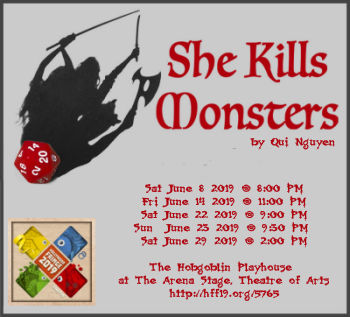 Both of our shows Saturday night were at
Both of our shows Saturday night were at  The second show we saw last night,
The second show we saw last night, 
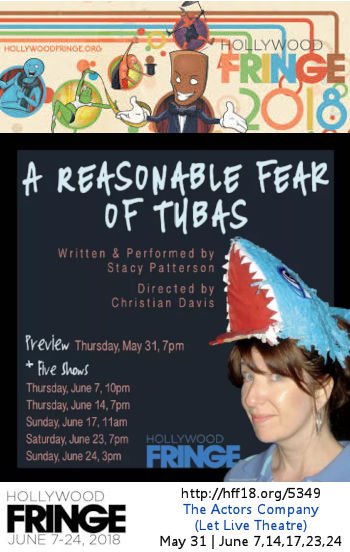
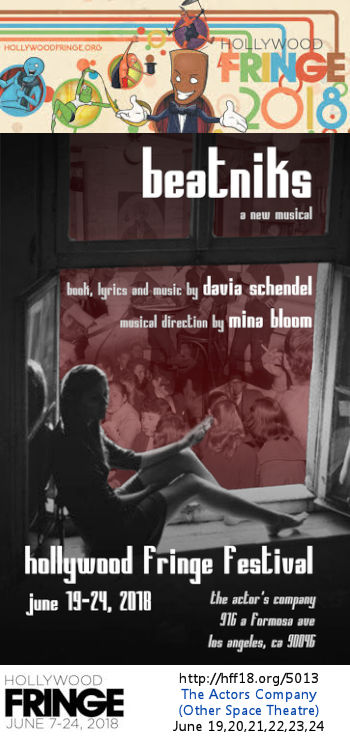
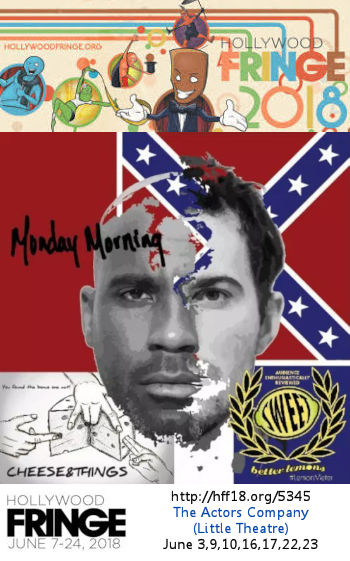 Monday Morning / Cheese & Things
Monday Morning / Cheese & Things
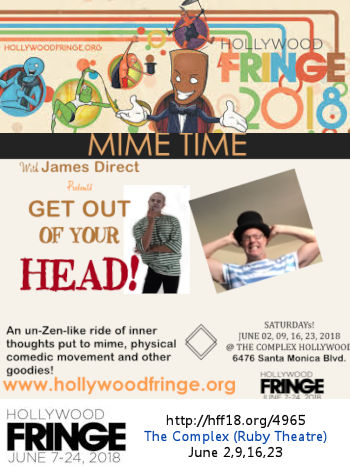


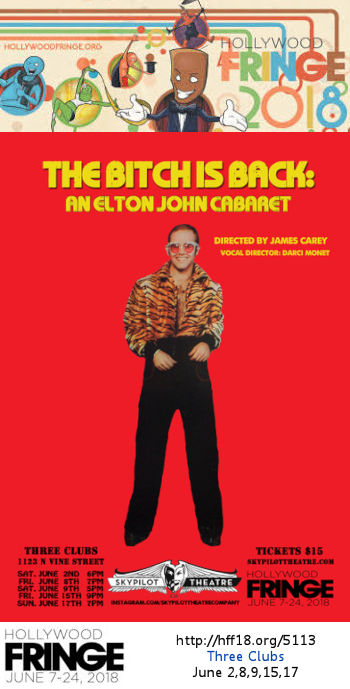 After Amanda, it was time to grab a quick dinner at
After Amanda, it was time to grab a quick dinner at 